
A basic understanding
of People Reading increases anyone's long-term relationship potential.
The opportunity to help couples with this specific brand of relationship
counseling is one of the unique pleasures of practicing People
Reading. If a couple seeks guidance before making a commitment,
the more informative and helpful the personological insight and
direction are likely to be.

Elizabeth Whiteside
wrote, "Always our progress is through better dominion over
a key trait." Dominion in this context means "control."
Gaining dominion over our own traits enables us to reach our
true potential. Once this has begun, we can allow others to do
the same. People Reading encourages people to establish the "right"
boundaries for themselves.
As we begin
to see others as they really are, we can sense what's coming
and prepare for it. We shouldn't be startled when an emotional
person acts emotionally. We know the person with high intensity
of self confidence will act courageous and bold. We watch as
the person with a flair for the spotlight attempts to draw the
attention to themselves.
As traits vary greatly
between individuals, so do actions and reactions. People Reading
deals with the ordinary issues that we encounter in everyday
life. Every day we watch as people attempt to find their place
in life. After all, this is what makes life interesting. I have
selected sample relationship profiles and presented them from
opposite points of view. Notice how trait interaction could set
up stress in a relationship and how understanding the other person's
point of view could bring harmony.
 When we truly appreciate another person's
natural disposition, we bring honor to that relationship. It
is said we should seek first to understand, then to be understood.
Opposite trait intensities contribute to potential problems in
any relationship. When we truly appreciate another person's
natural disposition, we bring honor to that relationship. It
is said we should seek first to understand, then to be understood.
Opposite trait intensities contribute to potential problems in
any relationship.
When people gain conscious awareness of their tendencies, they
can identify potential conflicts and act to avoid them. However,
differing intensities on selected major traits will still have
a profound influence on the relationship. Pay special attention
to the trait explanations and comparisons below. These examples
show how People Reading works in everyday life.

This trait is one
of the most important in People Reading. People with eyes set
wide apart appear permissive and easy going. People with eyes
set close together are focused, concerned, and dependable.
|
Easy Going
(eyes
wider apart than their width, tear duct to outer edge)
- These
people view life in broad terms. They see the "big picture"
and view situations from a distance.
- They
are easy to deal with and usually very popular, all other traits
being equal.
- They
don't alienate others by getting involved in issues that don't
concern them.
- They
need to focus on what's in front of them. They will pay the consequences
if they delay, procrastinate, or postpone. They should stay on
track and crack down the moment something gets out of hand.
|


|
|
Close Focus
(eyes
closer together than their width, tear duct to outer edge)
- These
people are more conscientious and concentrate on issues that
are directly in front of them.
- They
have a narrower emotional field of vision.
- They
commit intensely when their emotions are aroused.
- Their
greatest advantage is their quick reaction time.
- In
addition, they have a built-in sense of right and wrong.
- However,
they may appear to be a narrow-minded busy-body. They must teach
themselves to see a greater perspective and not get irritated
by a specific issue. When they are not in charge, they should
mind their own business.
|


|
Trait Interaction: Tolerance
Compatibility, Responsibility and Understanding |
 These similar polarities will get along
just fine. They will drive other people crazy, though. Others
must learn to expect them both to appear very easy going (take
their own sweet time, what's the hurry?, etc.). No compatibility
problems but a dangerous situation unless the subjects understand
where they can have problems develop (paying bills, meeting deadlines,
etc.) and compensate or overcome potential deficiencies. Fun
to be around. See the big picture. Potentially late for every
engagement. "What's all the fuss about?" These similar polarities will get along
just fine. They will drive other people crazy, though. Others
must learn to expect them both to appear very easy going (take
their own sweet time, what's the hurry?, etc.). No compatibility
problems but a dangerous situation unless the subjects understand
where they can have problems develop (paying bills, meeting deadlines,
etc.) and compensate or overcome potential deficiencies. Fun
to be around. See the big picture. Potentially late for every
engagement. "What's all the fuss about?" |
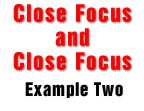 These
two will run a tight ship. Everything that "needs"
to be done will get done in a timely manner. At least they will
intend to do so. They will be conscientious and reliable. To
others, these people will appear well suited. Now, that's all
well and good, but one or the other may occasionally appear (to
the other) to be dragging their feet or procrastinating about
something "important." That's a potential point of
contention. Each person must still realize where their boundaries
are and stay inside them. A very close focus person will appear
like an easy going person to a very, very, very close focus person.
It's a matter of degree. OK? These
two will run a tight ship. Everything that "needs"
to be done will get done in a timely manner. At least they will
intend to do so. They will be conscientious and reliable. To
others, these people will appear well suited. Now, that's all
well and good, but one or the other may occasionally appear (to
the other) to be dragging their feet or procrastinating about
something "important." That's a potential point of
contention. Each person must still realize where their boundaries
are and stay inside them. A very close focus person will appear
like an easy going person to a very, very, very close focus person.
It's a matter of degree. OK? |
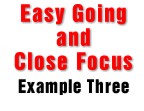 This
can be a relationship "buster" if these two people
do not understand how this trait plays out. One person will always
appear lackadaisical to the other and, conversely, one will appear
like a pain in the neck. The easy going person needs to remember
that the close focus person needs (emotionally) to feel like
something is getting done. They need to look like they are in
constant motion to the other person on the issues that are important
to the close focus person. Conversely, the close focus person
needs to remember where their boundaries are and not cross over
if they are not in charge or responsible for the outcome of the
situation. Let "them" (easy going person) make their
own mistakes if it doesn't affect "you." This
can be a relationship "buster" if these two people
do not understand how this trait plays out. One person will always
appear lackadaisical to the other and, conversely, one will appear
like a pain in the neck. The easy going person needs to remember
that the close focus person needs (emotionally) to feel like
something is getting done. They need to look like they are in
constant motion to the other person on the issues that are important
to the close focus person. Conversely, the close focus person
needs to remember where their boundaries are and not cross over
if they are not in charge or responsible for the outcome of the
situation. Let "them" (easy going person) make their
own mistakes if it doesn't affect "you." |
 This trait
is an indication of how people consciously process thought. People
with a "swept-back" forehead are objective thinkers
(quick-witted). People with a more "straight-up-and-down"
forehead are subjective thinkers (sequential).
This trait
is an indication of how people consciously process thought. People
with a "swept-back" forehead are objective thinkers
(quick-witted). People with a more "straight-up-and-down"
forehead are subjective thinkers (sequential).
|
Objective
Thinker
(forehead
slopes back at an angle)
- These
people draw quick conclusions based on their past experience.
- They
react quickly to what is going on around them.
- They
instantly find the essence of the situation and are comfortable
with a fast resolution. They have a natural instinct to act right
now.
- They
have to take the time to understand the theory behind certain
issues. Realizing every situation is new helps them deal with
others more effectively and realistically. They need to learn
not to leap ahead. Read the directions!
|
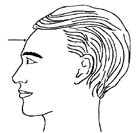

|
|
Sequential
Thinker
(forehead
is more vertical)
- These
people take things one step at time and prefer to process information
in sequence to better understand the key points.
- The
theory and cause behind situations draws their intellectual
attention.
- They
take time to think things through before taking action.
- They
need to learn when it is appropriate to think and when it isn't.
They must learn to stay with the flow. If others are moving quickly,
they should match that behavior if the issue is not essential.
|
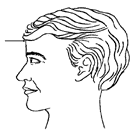

|
Trait Interaction: Thinking Style
Compatibility, Responsibility and Understanding |
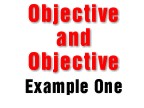 These similar polarities will appear
to be on "fast forward" all the time. They believe
they naturally see things for what they are and believe they
understand the conclusion beforehand. Others will have to slow
them down or every conversation will last only a few moments.
These people will have a lot of "go" and very little
"stop." They need to understand that some issues require
contemplation and study. These similar polarities will appear
to be on "fast forward" all the time. They believe
they naturally see things for what they are and believe they
understand the conclusion beforehand. Others will have to slow
them down or every conversation will last only a few moments.
These people will have a lot of "go" and very little
"stop." They need to understand that some issues require
contemplation and study. |
 These
two will study and study and study. Every issue will need extensive
research and consideration. They have a lot of "stop"
and less "go" in their outward activities. They need
to realize that some things do not require magnification and
prolonged thought. Other people can draw them out and help them
be more than they think. Fun folks to have dinner with and discuss
things in depth. These
two will study and study and study. Every issue will need extensive
research and consideration. They have a lot of "stop"
and less "go" in their outward activities. They need
to realize that some things do not require magnification and
prolonged thought. Other people can draw them out and help them
be more than they think. Fun folks to have dinner with and discuss
things in depth. |
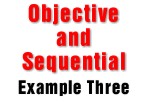 This
can also be a relationship "buster" if these two people
do not understand how this trait plays out. Sequential to Objective:
"Why do you always jump to conclusions? Don't you think
we should spend some time looking at our alternatives?"
Objective to Sequential: "What's to think about? I've seen
this before. It's the same thing as the one four years ago. Don't
you remember?" Each person has the responsibility to put
themselves in the other person's place at this point. They should
discuss whether or not the issue requires IN-DEPTH CONSIDERATION
OR NOT. Then, proceed when they reach agreement--one way or the
other. This
can also be a relationship "buster" if these two people
do not understand how this trait plays out. Sequential to Objective:
"Why do you always jump to conclusions? Don't you think
we should spend some time looking at our alternatives?"
Objective to Sequential: "What's to think about? I've seen
this before. It's the same thing as the one four years ago. Don't
you remember?" Each person has the responsibility to put
themselves in the other person's place at this point. They should
discuss whether or not the issue requires IN-DEPTH CONSIDERATION
OR NOT. Then, proceed when they reach agreement--one way or the
other. |
|



 When we truly appreciate another person's
natural disposition, we bring honor to that relationship. It
is said we should seek first to understand, then to be understood.
Opposite trait intensities contribute to potential problems in
any relationship.
When we truly appreciate another person's
natural disposition, we bring honor to that relationship. It
is said we should seek first to understand, then to be understood.
Opposite trait intensities contribute to potential problems in
any relationship. 



 These similar polarities will get along
just fine. They will drive other people crazy, though. Others
must learn to expect them both to appear very easy going (take
their own sweet time, what's the hurry?, etc.). No compatibility
problems but a dangerous situation unless the subjects understand
where they can have problems develop (paying bills, meeting deadlines,
etc.) and compensate or overcome potential deficiencies. Fun
to be around. See the big picture. Potentially late for every
engagement. "What's all the fuss about?"
These similar polarities will get along
just fine. They will drive other people crazy, though. Others
must learn to expect them both to appear very easy going (take
their own sweet time, what's the hurry?, etc.). No compatibility
problems but a dangerous situation unless the subjects understand
where they can have problems develop (paying bills, meeting deadlines,
etc.) and compensate or overcome potential deficiencies. Fun
to be around. See the big picture. Potentially late for every
engagement. "What's all the fuss about?" These
two will run a tight ship. Everything that "needs"
to be done will get done in a timely manner. At least they will
intend to do so. They will be conscientious and reliable. To
others, these people will appear well suited. Now, that's all
well and good, but one or the other may occasionally appear (to
the other) to be dragging their feet or procrastinating about
something "important." That's a potential point of
contention. Each person must still realize where their boundaries
are and stay inside them. A very close focus person will appear
like an easy going person to a very, very, very close focus person.
It's a matter of degree. OK?
These
two will run a tight ship. Everything that "needs"
to be done will get done in a timely manner. At least they will
intend to do so. They will be conscientious and reliable. To
others, these people will appear well suited. Now, that's all
well and good, but one or the other may occasionally appear (to
the other) to be dragging their feet or procrastinating about
something "important." That's a potential point of
contention. Each person must still realize where their boundaries
are and stay inside them. A very close focus person will appear
like an easy going person to a very, very, very close focus person.
It's a matter of degree. OK? This
can be a relationship "buster" if these two people
do not understand how this trait plays out. One person will always
appear lackadaisical to the other and, conversely, one will appear
like a pain in the neck. The easy going person needs to remember
that the close focus person needs (emotionally) to feel like
something is getting done. They need to look like they are in
constant motion to the other person on the issues that are important
to the close focus person. Conversely, the close focus person
needs to remember where their boundaries are and not cross over
if they are not in charge or responsible for the outcome of the
situation. Let "them" (easy going person) make their
own mistakes if it doesn't affect "you."
This
can be a relationship "buster" if these two people
do not understand how this trait plays out. One person will always
appear lackadaisical to the other and, conversely, one will appear
like a pain in the neck. The easy going person needs to remember
that the close focus person needs (emotionally) to feel like
something is getting done. They need to look like they are in
constant motion to the other person on the issues that are important
to the close focus person. Conversely, the close focus person
needs to remember where their boundaries are and not cross over
if they are not in charge or responsible for the outcome of the
situation. Let "them" (easy going person) make their
own mistakes if it doesn't affect "you."



 These similar polarities will appear
to be on "fast forward" all the time. They believe
they naturally see things for what they are and believe they
understand the conclusion beforehand. Others will have to slow
them down or every conversation will last only a few moments.
These people will have a lot of "go" and very little
"stop." They need to understand that some issues require
contemplation and study.
These similar polarities will appear
to be on "fast forward" all the time. They believe
they naturally see things for what they are and believe they
understand the conclusion beforehand. Others will have to slow
them down or every conversation will last only a few moments.
These people will have a lot of "go" and very little
"stop." They need to understand that some issues require
contemplation and study. These
two will study and study and study. Every issue will need extensive
research and consideration. They have a lot of "stop"
and less "go" in their outward activities. They need
to realize that some things do not require magnification and
prolonged thought. Other people can draw them out and help them
be more than they think. Fun folks to have dinner with and discuss
things in depth.
These
two will study and study and study. Every issue will need extensive
research and consideration. They have a lot of "stop"
and less "go" in their outward activities. They need
to realize that some things do not require magnification and
prolonged thought. Other people can draw them out and help them
be more than they think. Fun folks to have dinner with and discuss
things in depth. This
can also be a relationship "buster" if these two people
do not understand how this trait plays out. Sequential to Objective:
"Why do you always jump to conclusions? Don't you think
we should spend some time looking at our alternatives?"
Objective to Sequential: "What's to think about? I've seen
this before. It's the same thing as the one four years ago. Don't
you remember?" Each person has the responsibility to put
themselves in the other person's place at this point. They should
discuss whether or not the issue requires IN-DEPTH CONSIDERATION
OR NOT. Then, proceed when they reach agreement--one way or the
other.
This
can also be a relationship "buster" if these two people
do not understand how this trait plays out. Sequential to Objective:
"Why do you always jump to conclusions? Don't you think
we should spend some time looking at our alternatives?"
Objective to Sequential: "What's to think about? I've seen
this before. It's the same thing as the one four years ago. Don't
you remember?" Each person has the responsibility to put
themselves in the other person's place at this point. They should
discuss whether or not the issue requires IN-DEPTH CONSIDERATION
OR NOT. Then, proceed when they reach agreement--one way or the
other.